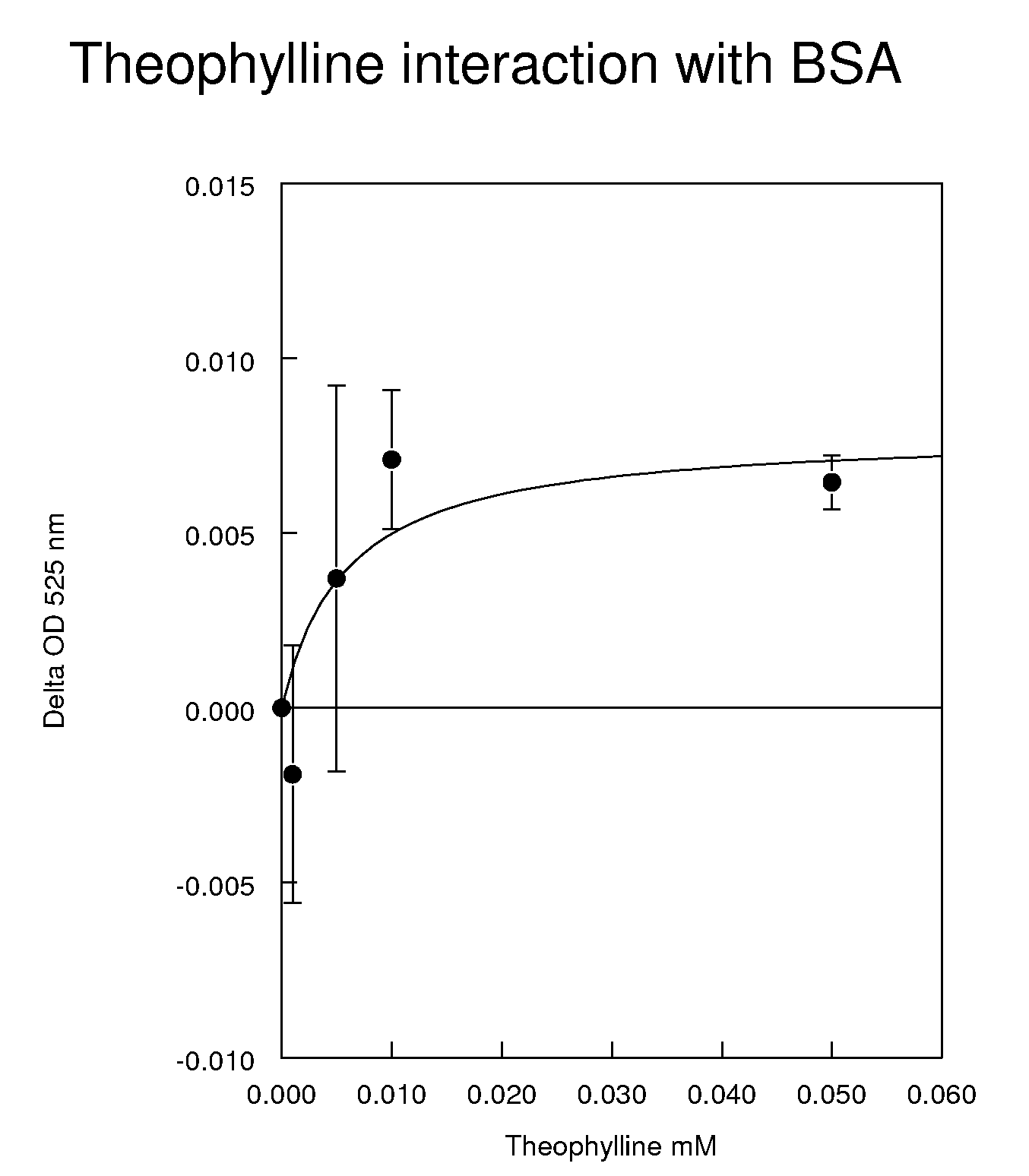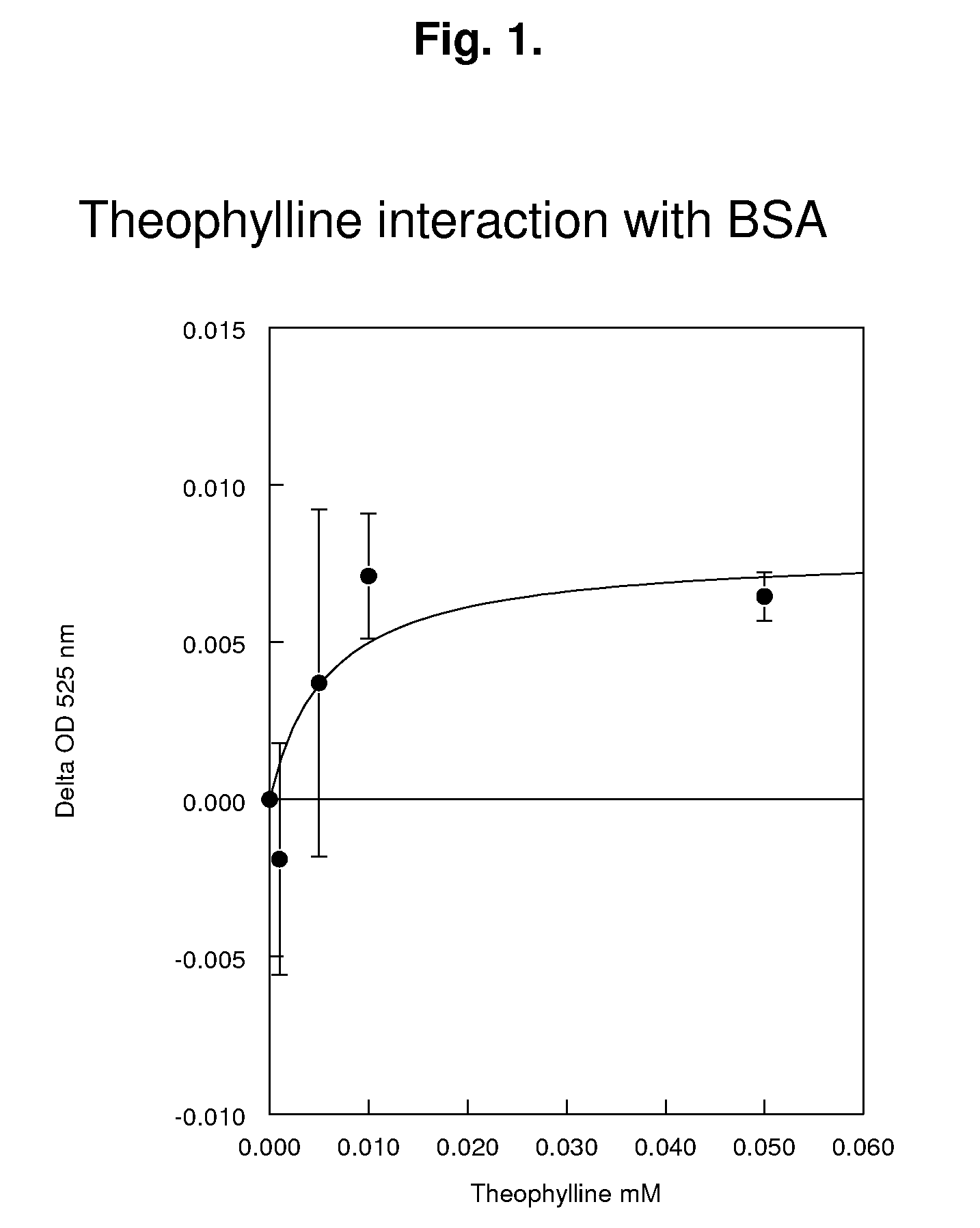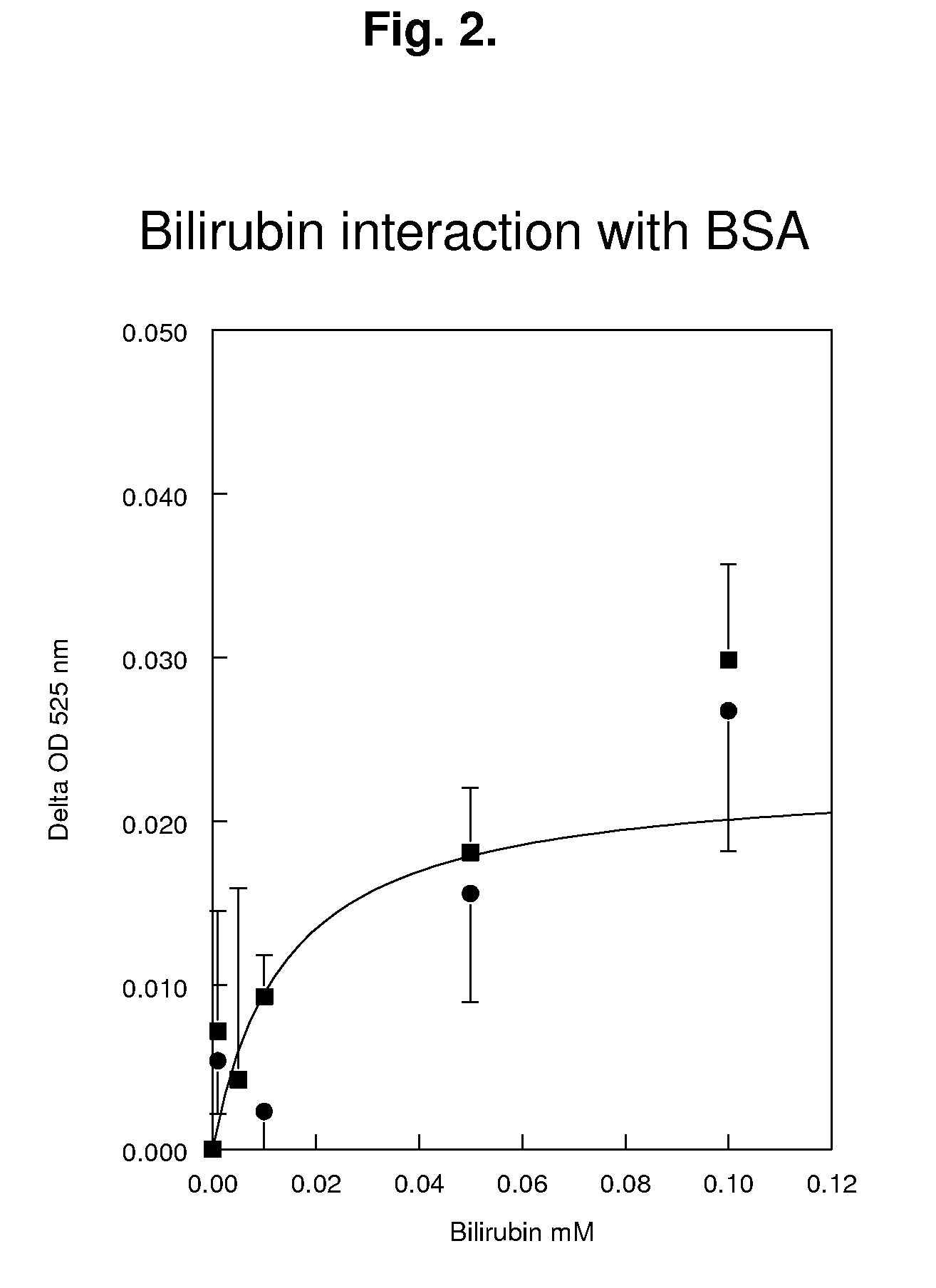Reagents and methods for the determination of pk/adme-tox characteristics of new chemical entities and of drug candidates
a new chemical entity and admetox technology, applied in the direction of material testing goods, measurement devices, instruments, etc., can solve the problems of reducing the number of compounds that survive reducing the efficiency of the process of converting new chemical entities into marketed drugs, and reducing the number of compounds that can be used in the full drug development process
- Summary
- Abstract
- Description
- Claims
- Application Information
AI Technical Summary
Benefits of technology
Problems solved by technology
Method used
Image
Examples
example 1
[0129]A solution of gold nanoparticles of an average diameter of 40 nm was prepared by dissolving in a 1 liter Erlenmeyer 200 mg of Hydrogen tetrachloroaurate (III) (Acros 22362-0010) in 500 ml of distilled water. A magnetic bar was added and the vessel was placed on a magnetic stirrer. The solution was heated to a boil and agitated vigorously. When boiling, 30 ml of a 1% sodium citrate (prepared by neutralizing a 1% citric acid-anhydrous, Sigma C-0759) were injected rapidly into the vessel. Boiling and stirring were continued until the solution turned progressively black and then deep red, indicating the formation of the nanoparticles. The solution was then cooled to room temperature. The sol was characterized by an absorption band at 524 nm and an optical density (1 cm) of 4.
[0130]A 10 ml portion of the colloidal gold solution was then poured in a beaker with a magnetic stirring bar and was progressively neutralized under magnetic stirring up to pH 6.5 using 10 mM sodium hydroxide...
example 2
[0134]Colloidal poly(aniline) was obtained as follows: As much as possible of a 10 g portion of Poly(vinyl alcohol) was dissolved in 200 ml boiling water. The hot solution was then filtered and cooled to room temperature. The solution was then acidified by adding 16.8 ml of HCl 12N. A portion of this solution (100 ml) was transfered to a clean beaker with a magnetic bar, which was placed on a magnetic stirrer at 4° C. The solution was agitated and 0.25 ml of aniline (Aldrich 24,861-4) was injected. Immediately after this injection, 658 mg of ammonium peroxidisulfate (Aldrich 24,861-4) freshly dissolved in 5 ml water were added. The solution was maintained under stirring for 48 hours at 4° C. The colloid was then purified by chromatography on a Sephacryl S-1000 column eluted with 0.1 M phosphate buffer pH 8 containing 0.5% of tween 20.
[0135]The buffered solution was then titrated with either HCl or NaOH and a spectrum was taken at each pH value recorded during the titration (Ultrospe...
example 3
[0137]A colloidal gold sol was prepared as described above in example 1. The colloid was then coated with human serum albumin (HSA, Sigma A-1653) as described above, except that the gold colloid was set at pH 5.5. The reagent was then buffered with 50 mM borate as above and 150 mM sodium chloride, Tween 20 (0.2%) and Fish gelatin (0.1%) were respectively added for further stabilization.
[0138]Digoxin (Fluka 37100) was dissolved in methanol (100 mg / liter, 128 μM) and further diluted in PBS to generate sample solutions containing respectively 256, 128, 64, 25.8 and 12.8 nM. These samples (30 μl) were mixed with an accelerating buffer (120 μl; 200 mM Tris-HCl pH 8 containing 250 mM magnesium chloride, 70 g / l poly(ethyleneglycol) 6000, 15 g / l poly(ethyleneglycol) 35,000 and Triton X-100 10 ml / l). The mixing and reaction was performed in disposable cuvettes in a clinical chemistry analyzer thermostated at 37° C. (Cobas Mira Plus, ABX Diagnostics, Montpellier, France). Immediately after sa...
PUM
 Login to View More
Login to View More Abstract
Description
Claims
Application Information
 Login to View More
Login to View More - R&D
- Intellectual Property
- Life Sciences
- Materials
- Tech Scout
- Unparalleled Data Quality
- Higher Quality Content
- 60% Fewer Hallucinations
Browse by: Latest US Patents, China's latest patents, Technical Efficacy Thesaurus, Application Domain, Technology Topic, Popular Technical Reports.
© 2025 PatSnap. All rights reserved.Legal|Privacy policy|Modern Slavery Act Transparency Statement|Sitemap|About US| Contact US: help@patsnap.com



